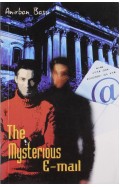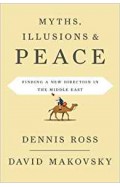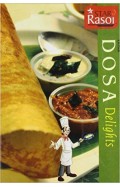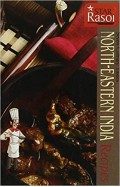How to Think Like a Poet
By: Dai George
-
Rs 3,415.50
- Rs 3,795.00
- 10%
You save Rs 379.50.
Due to constant currency fluctuation, prices are subject to change with or without notice.
How did the greatest poets in history make the world anew? And what can we learn from the magic, the wisdom and the humour that is the gift of the greatest poets of our human civilization? From the genius of the Greeks and Romans to love and metaphysics of the Middle Ages, to the concrete wonder of New York and the Beat Poets of San Francisco, this is the ultimate guide to the greatest writers of the human age, and what their extraordinary lives can teach us about how to see the world.
More than any other genre, poetry represents the art of thinking. Writing about the 17th-century English poet John Donne, T.S. Eliot summed up how vital thinking is to the whole poetic enterprise. 'A thought to Donne was an experience,' he wrote; 'it modified his sensibility.' Where most people experience a thought and quickly move on to the next, for the poet a thought is something that needs to be savoured, articulated and preserved. It's an emotional experience, not just an intellectual one – a sensation that builds up in the mind and body and has to be committed to the page.
In showing how the great poets of human history lived and worked - and illuminating the gifts of the written word they left us - the poet and poetry teacher Dai George provides a readable and entertaining introduction to how to think like a poet, and how we can weave that thinking into our everyday lives. He addresses questions the great poets have grappled with: What is it to describe the world? How can we express love, grief, or friendship? And how can we rise above the misery of the world and see the beauty in the everyday?
This book paints vivid portraits of a global assortment of great poets throughout history: from Sappho, Juvenal and LiXu, to William Shakespeare and John Donne, to Frank O Hara, Pablo Neruda and Sylvia Plath. George also seeks to re-examine the canon – which has been overwhelmingly Western, white and male – who have long been held up as pillars of the art, and bring to light major figures from other, no less important cultures and communities – including major poets from China, pre-colonial America and Japan. He also engages with the extraordinary boom in poetry on Instagram, Twitter and TikTok – all signs of what every poet knows – we need poetry in order to live better, more fulfilling lives.
In each brief chapter, George brings to life these often prescient, always compelling poetical thinkers, showing how their way of writing about and understanding the world grew out of their own lives and times and how we can use their insights today.
How did the greatest poets in history make the world anew? And what can we learn from the magic, the wisdom and the humour that is the gift of the greatest poets of our human civilization? From the genius of the Greeks and Romans to love and metaphysics of the Middle Ages, to the concrete wonder of New York and the Beat Poets of San Francisco, this is the ultimate guide to the greatest writers of the human age, and what their extraordinary lives can teach us about how to see the world.
More than any other genre, poetry represents the art of thinking. Writing about the 17th-century English poet John Donne, T.S. Eliot summed up how vital thinking is to the whole poetic enterprise. 'A thought to Donne was an experience,' he wrote; 'it modified his sensibility.' Where most people experience a thought and quickly move on to the next, for the poet a thought is something that needs to be savoured, articulated and preserved. It's an emotional experience, not just an intellectual one – a sensation that builds up in the mind and body and has to be committed to the page.
In showing how the great poets of human history lived and worked - and illuminating the gifts of the written word they left us - the poet and poetry teacher Dai George provides a readable and entertaining introduction to how to think like a poet, and how we can weave that thinking into our everyday lives. He addresses questions the great poets have grappled with: What is it to describe the world? How can we express love, grief, or friendship? And how can we rise above the misery of the world and see the beauty in the everyday?
This book paints vivid portraits of a global assortment of great poets throughout history: from Sappho, Juvenal and LiXu, to William Shakespeare and John Donne, to Frank O Hara, Pablo Neruda and Sylvia Plath. George also seeks to re-examine the canon – which has been overwhelmingly Western, white and male – who have long been held up as pillars of the art, and bring to light major figures from other, no less important cultures and communities – including major poets from China, pre-colonial America and Japan. He also engages with the extraordinary boom in poetry on Instagram, Twitter and TikTok – all signs of what every poet knows – we need poetry in order to live better, more fulfilling lives.
In each brief chapter, George brings to life these often prescient, always compelling poetical thinkers, showing how their way of writing about and understanding the world grew out of their own lives and times and how we can use their insights today.
Zubin Mehta: A Musical Journey (An Authorized Biography)
By: VOID - Bakhtiar K. Dadabhoy
Rs 525.00 Rs 1,050.00 Ex Tax :Rs 525.00
Myths Illusions and Peace: Finding a New Direction for America in the Middle East
By: Dennis Ross
Rs 985.50 Rs 1,095.00 Ex Tax :Rs 985.50
The Origins of Political Order From Prehuman Times to the French RevolutioN
By: Francis Fukuyama
Rs 3,505.50 Rs 3,895.00 Ex Tax :Rs 3,505.50
Manning Up: How the Rise of Women Has Turned Men into Boys
By: Kay Hymowitz
Rs 746.25 Rs 995.00 Ex Tax :Rs 746.25
The Obama Syndrome: Surrender At Home War Abroad
By: Tariq Ali
Rs 1,165.50 Rs 1,295.00 Ex Tax :Rs 1,165.50
The Quest For Meaning: Developing A Philosophy Of Pluralism
By: Tariq Ramadan
Rs 1,185.75 Rs 1,395.00 Ex Tax :Rs 1,185.75
No similar books from this author available at the moment.
No recently viewed books available at the moment.
Zubin Mehta: A Musical Journey (An Authorized Biography)
By: VOID - Bakhtiar K. Dadabhoy
Rs 525.00 Rs 1,050.00 Ex Tax :Rs 525.00













-120x187.jpg?q6)







-120x187.jpg?q6)





